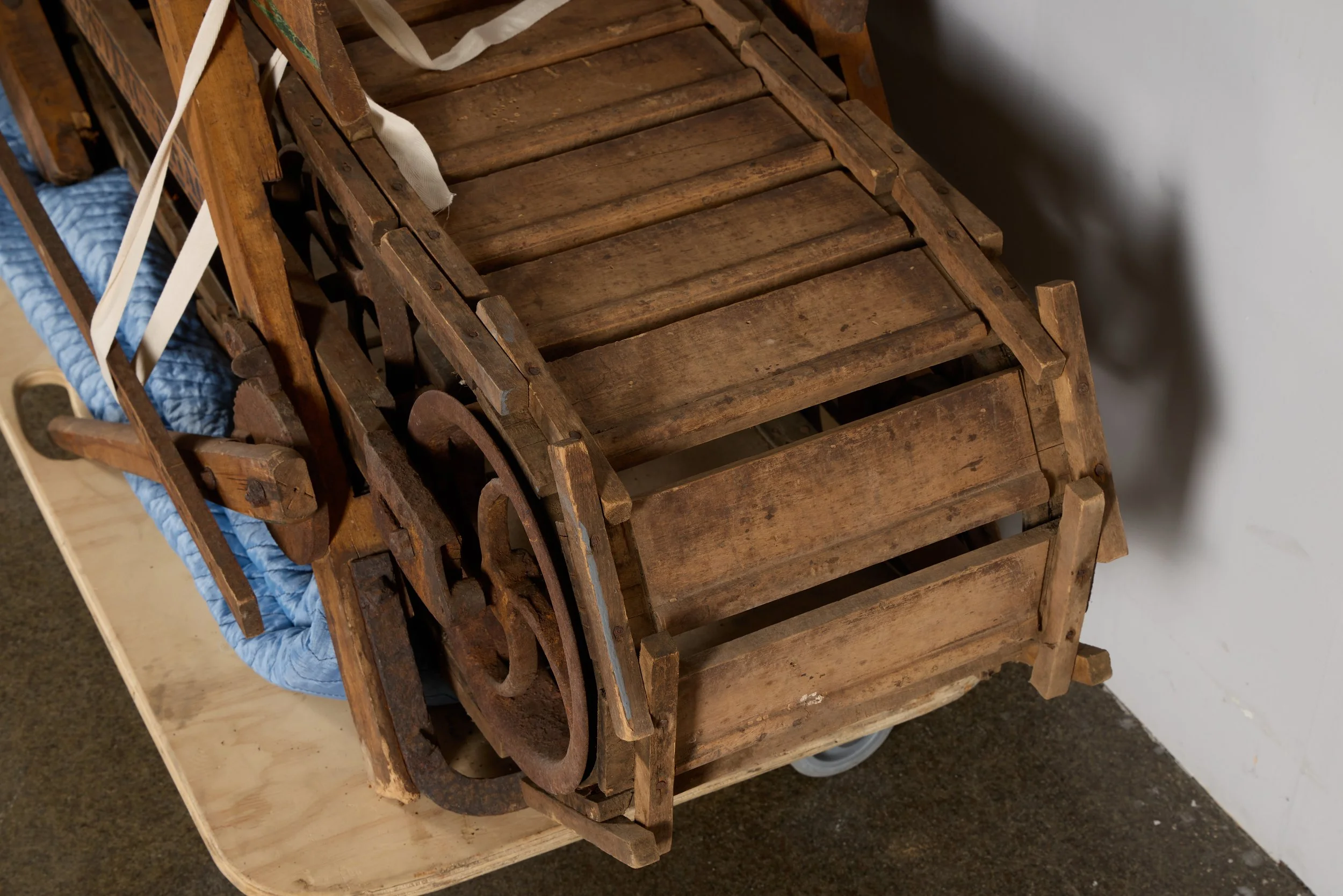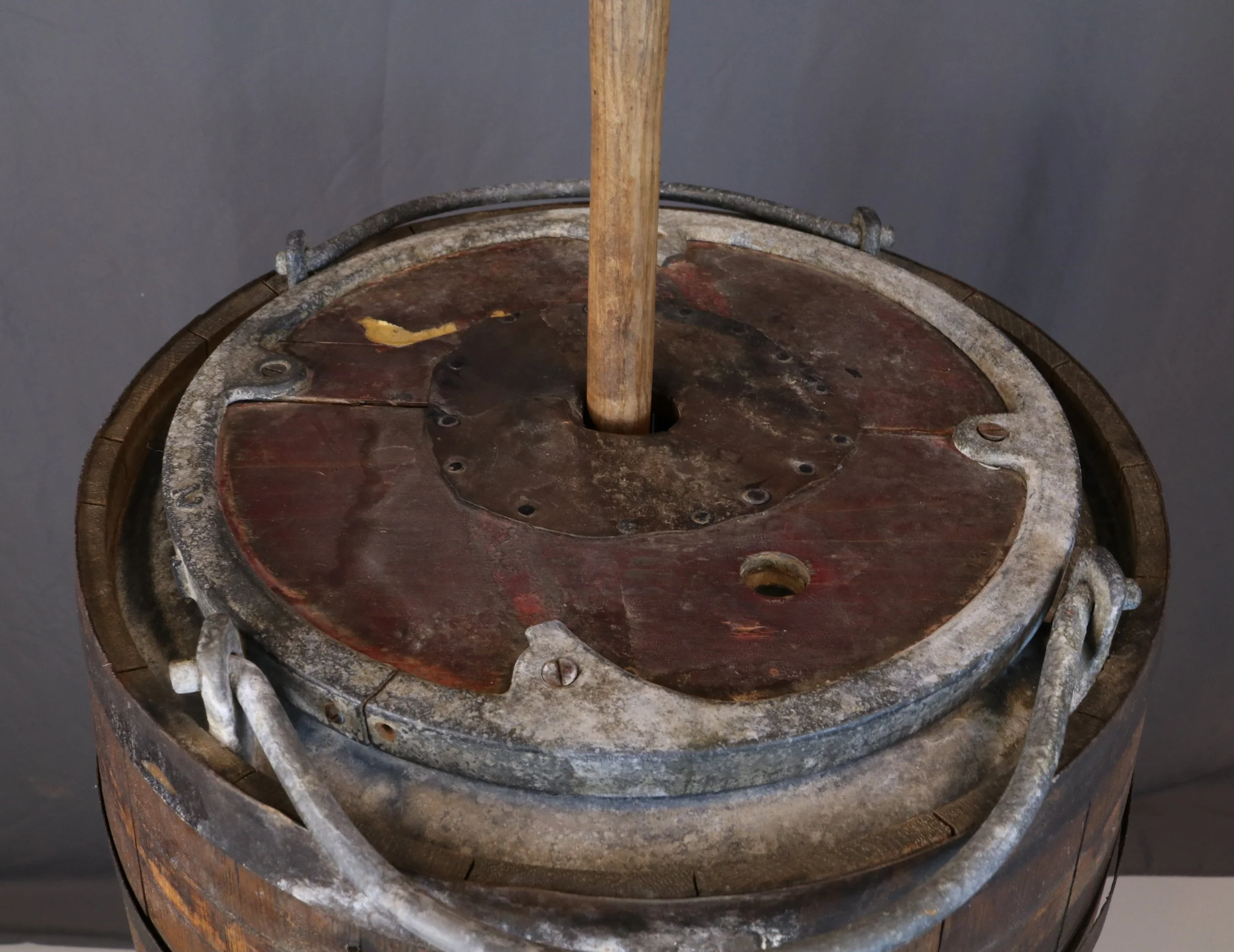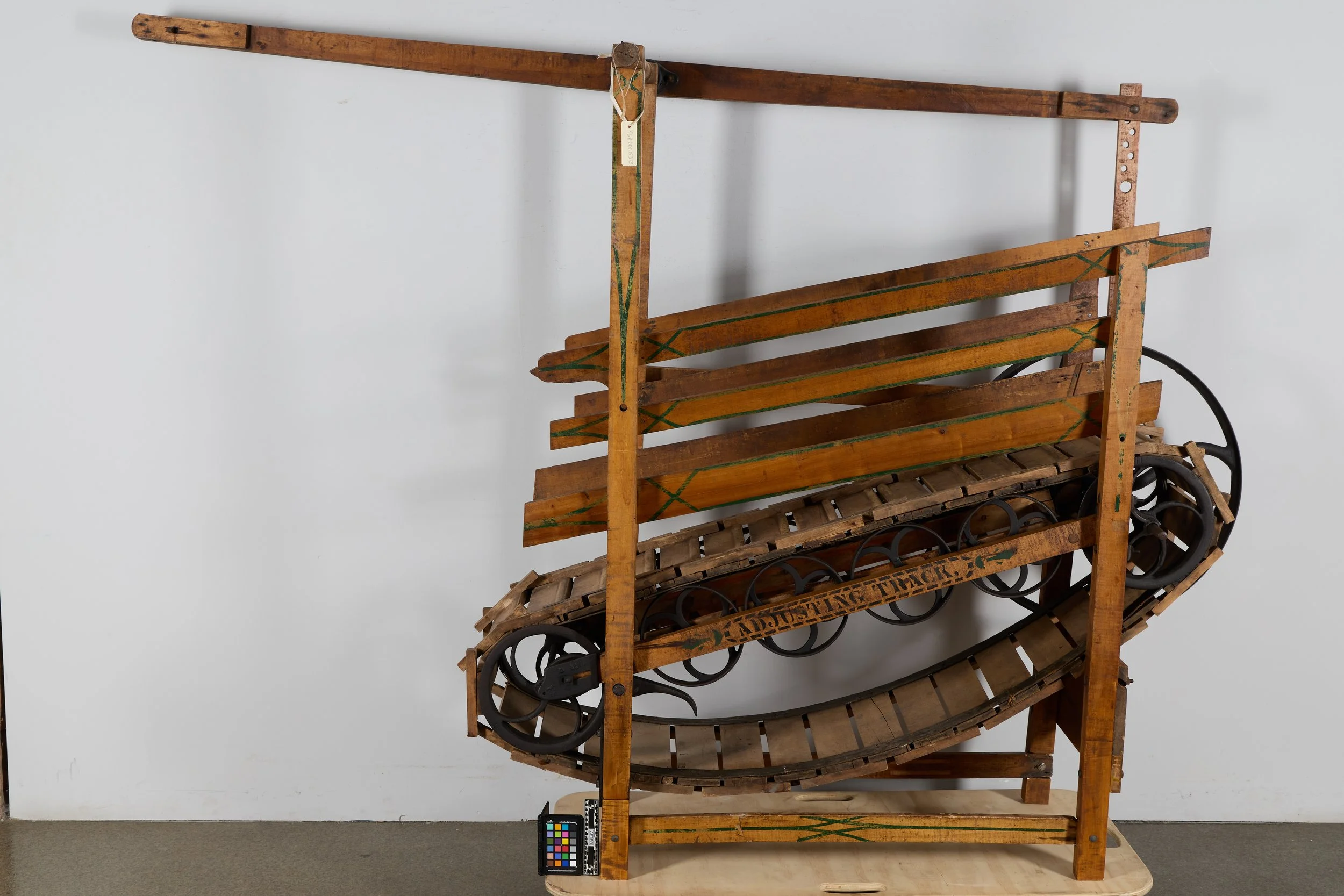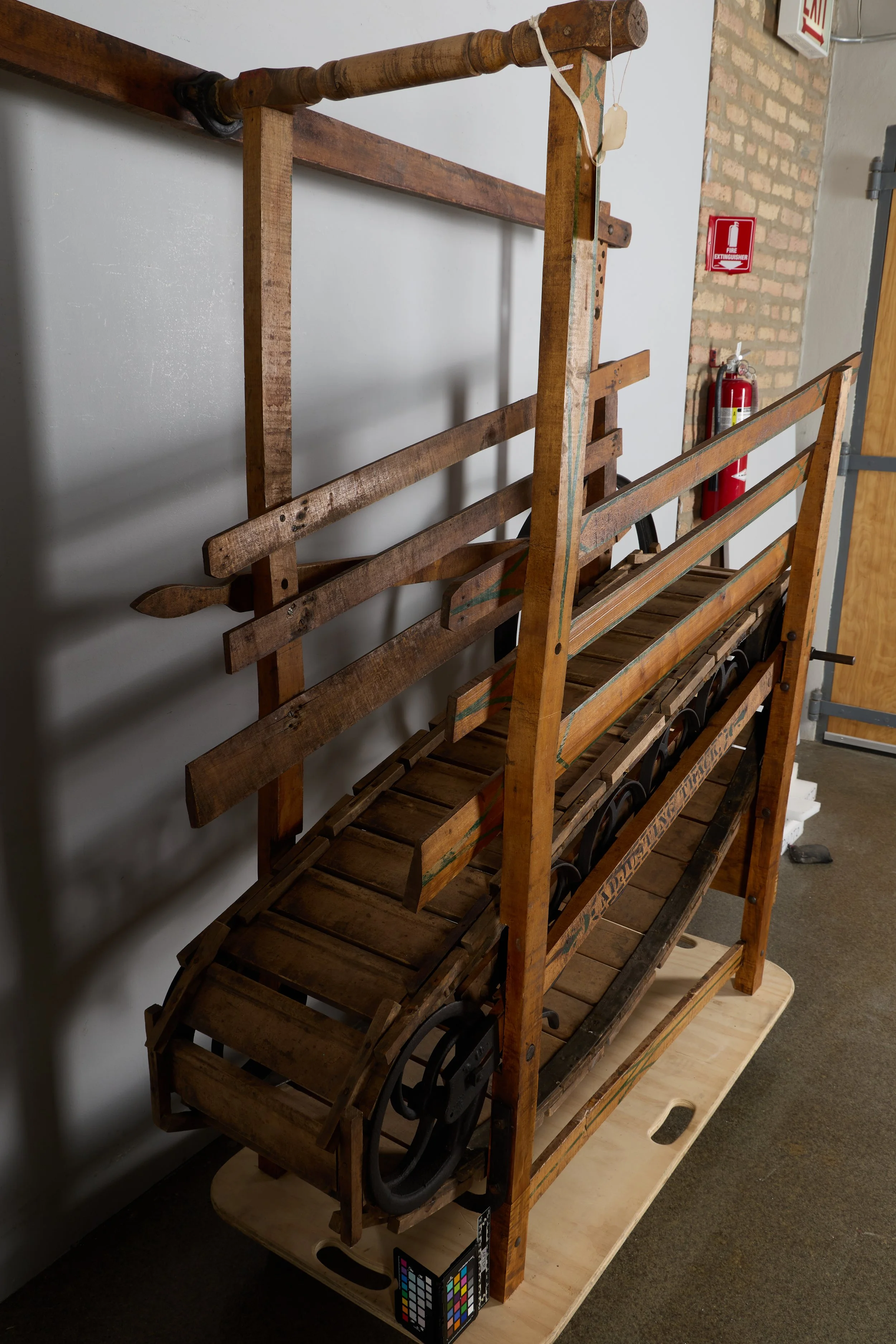In the late 19th century, a clever yet slightly eccentric contraption promised to spare farmers the hard, repetitive labor of churning cream. The device? A wooden treadmill connected to a butter churn, powered not by electricity or steam, but by a dog. Recently, The Conservation Center had the opportunity to stabilize and preserve one of these rare butter churns from the Museum of the Grand Prairie, a facility of the Champaign County Forest Preserves. Donated to the museum by William S. Redhed in 1968 as the part of the museum's founding collection, it remains one of the larger artifacts they hold. With its slatted wooden belt, iron flywheel, and battered churn barrel, the piece arrived with history etched into every part -- and plenty of conservation challenges to match.
The churn prior to arriving at The Center for treatment.
Patented in 1871 by H.M. Childs of Utica, New York, the butter churn is operated through an inclined treadmill that a dog or goat would walk on, its movement turning a flywheel that powered a churn dasher. While novel, it was far from efficient and was quickly replaced by more advanced barrel churns. Most surviving examples come from upstate New York, where Childs and others marketed the devices to working farms. Their promotional materials claimed the machines could be operated by a 30-pound dog or sheep and handle the needs of a large dairy.
An early advertisement for the dog-powered butter churn.
It may sound quaint now, but this approach to animal-powered labor was part of a broader 19th-century movement that often treated animals as disposable sources of energy. Dogs had long been used to run treadmills, including kitchens, where a poor little dog known as the turnspit was tasked with walking in circles just to keep the roast spinning. These dogs, labeled Canis vertigus by Carl Linnaeus—Latin for “dizzy dog”—were often overworked and undervalued. By the mid-1800s, their poor treatment helped spark the founding of the first Society for the Prevention of Cruelty to Animals. In fact, the SPCA’s early efforts in New York City were partly inspired by concerns over the use of turnspit dogs in hotel kitchens.
An illustrated example of the churn in action.
As public sentiment evolved, animal-powered devices fell out of favor, and the dogs associated with them became stigmatized as symbols of poverty. Turnspit dogs were described as ugly, miserable, and unwanted as pets, eventually disappearing altogether. Today, the butter churn serves as a reminder of both creative agricultural invention and the complex history of human-animal labor.
A dog demonstrates how the churn would be used.
When the churn arrived at the lab, it was in poor condition. The treadmill assembly had collapsed forward, the slatted belt was dry and brittle, and several of the structural battens were cracked or missing. The metal components, including guide wheels and connecting hardware, were corroded and discolored, with visible pitting and flaking. A portion of the lower frame rail was freshly broken. The churn barrel itself had loose staves, one of which was severely cracked, and showed signs of past water damage. Rust was evident on the metal hoops, and the paint and surface finishes throughout were fragile, flaking, or lost entirely.
Elements of the churn before treatment:
Associate conservator Andrew Rigsby began treatment with thorough photographic documentation, followed by gentle dry and solvent cleaning to remove dust and accretions. The dried leather elements were consolidated using Klucel G in ethanol to minimize brittleness. Where necessary, removable reinforcement parts were fabricated to provide discreet structural support. Misaligned elements were carefully disassembled and repositioned to correct the object's tilt, and corroded metal was stabilized using appropriate consolidants. Painted and finished surfaces were treated to prevent further loss, with minimal blending with archival materials for visual continuity.
The churn is now safely preserved and able to be studied, interpreted, or displayed in a stable upright orientation. The treadmill, flywheel, and churn mechanisms are once again readable as a system, illustrating the unique design and curious history behind the invention.
The treadmill after treatment.
The treadmill after treatment.
The treadmill after treatment.
The butter churn after treatment.
While the dog-powered churn may never have revolutionized the dairy industry, it left behind something better: a tangible record of inventive spirit, rural life, and the long, winding story of animal labor in human hands. We’re honored to have helped preserve this artifact—and we tip our hats to the determined little dogs who once walked to make butter.
"Whiskey," a taxidermied turnspit dog on display at the Abergavenny Museum in Wales.
Sources:
